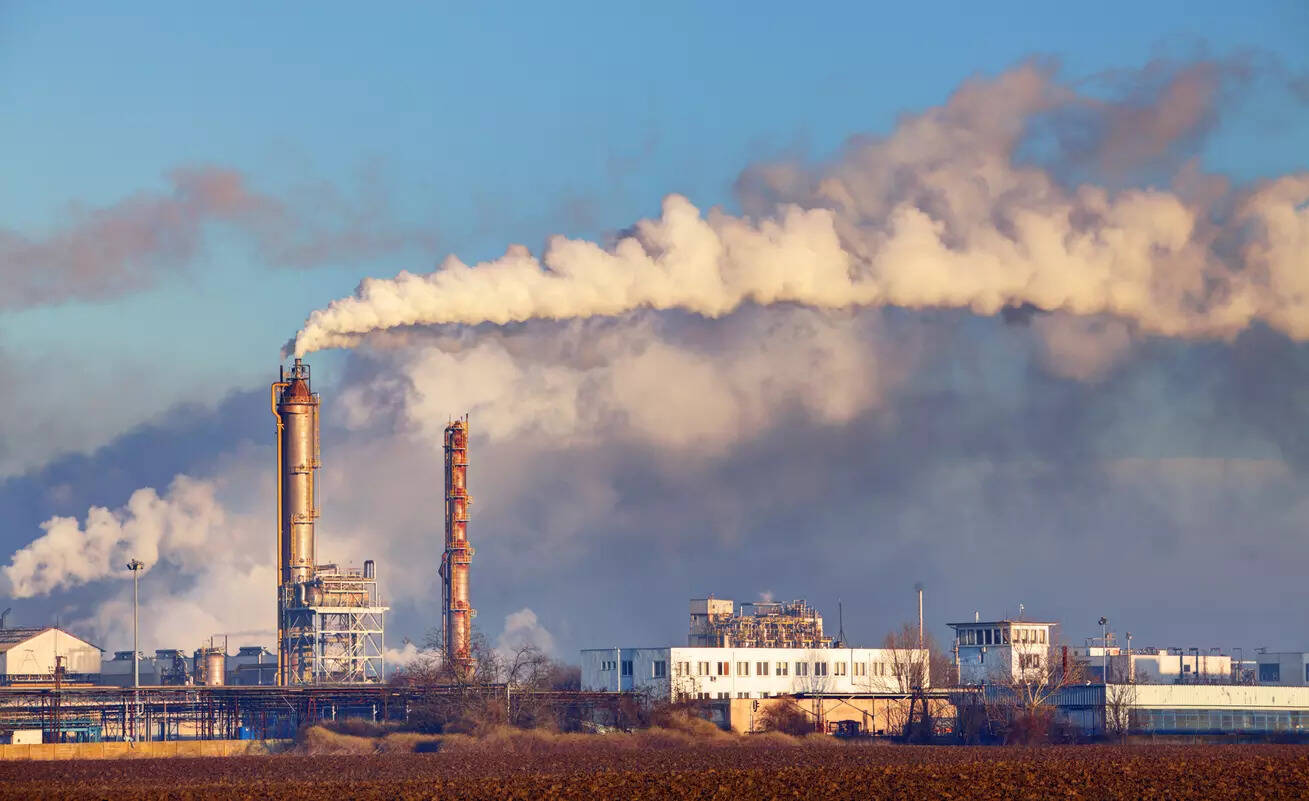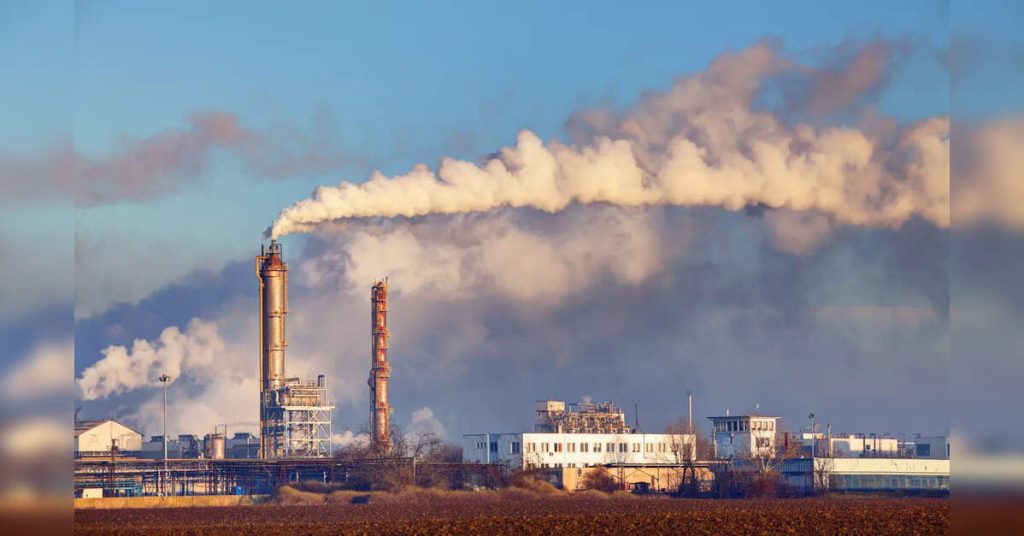
New Delhi: Global methane emissions from the upstream oil and gas industry are rising again after a multi-year decline. Satellite monitoring data compiled by Rystad Energy shows emissions ticking up significantly in late 2024 and the first quarter of 2025. Around 45,000 methane plumes were detected in the first quarter alone, up from 31,000 in the same quarter last year, carrying an estimated 45 million tonnes of CO₂-equivalent emissions. This marks a 40 per cent year-on-year increase.Methane is a potent greenhouse gas and is responsible for about a fifth of human-caused global warming. Unlike carbon dioxide, which stays in the atmosphere for centuries, methane dissipates relatively quickly. This has put immediate focus on it as a near-term climate mitigation target.
Which regions are driving the increase
The rise in emissions is uneven across regions. China has seen a near one-third increase in methane emissions from its upstream oil and gas activities. In the United States, the increase was about 4 per cent, attributed to production expansion in shale regions such as the Bakken. Russia, however, saw a 5 per cent decline, primarily due to reduced output resulting from disruptions linked to the Russia-Ukraine conflict.Satellite imagery indicates that significant methane plumes are being detected above production sites in the Middle East, North Africa, China, North America and Russia. These regions have high hydrocarbon extraction volumes and therefore high absolute emissions, although the rate of emissions per unit of output — also known as methane intensity — can differ widely depending on operational efficiency and infrastructure management.
How satellite detection is changing emissions monitoring
For years, methane reporting relied largely on self-disclosure by companies and national inventories. Now, satellites are providing real-time monitoring of methane plumes as they rise into the atmosphere. This is creating an independent, verifiable emissions dataset that, in several cases, shows discrepancies between reported emissions and actual leak events.Patrick King, Vice President of Emissions Research at Rystad Energy, explains the impact of this monitoring technology. He notes that upstream oil and gas activities are responsible for roughly 20 per cent of anthropogenic methane emissions. He adds that most leaks, once detected, can be repaired. However, many of the largest leak events are not reflected in company disclosures, highlighting the role of satellite technology in improving transparency.
Seasonal patterns are emerging as a significant factor. Colder temperatures in certain regions lead to increased operational stress and higher emissions during winter months. In regions like China, emissions peak during early winter in line with elevated natural gas demand. Despite this, China has seen a 30 per cent decline in satellite-detected methane emissions since 2018 even as natural gas production increased by 50 per cent, indicating that operational improvements and abatement programmes by companies such as CNPC and Sinopec may be having an impact.
United States: Federal policy uncertainty and industry response
In the United States, methane abatement has been part of the national climate agenda. The Waste Emission Charge, introduced in 2024, penalised large methane leaks. However, because it was based on industry-reported emissions and not satellite-detected emissions, it had limited reach. The policy was overturned in early 2025, creating uncertainty for future regulatory direction.
Despite evolving policy, the US shale sector is expected to continue lowering emission intensity due to operational efficiencies and corporate climate commitments. Preliminary 2024 data from the Lower 48 states suggests methane emissions are projected to remain steady compared to 2023 levels, even as gas production increases.
India and regional emission patterns
Countries in South and Central Asia, including India, Uzbekistan and Pakistan, saw methane emissions decline between 2022 and 2024. However, emissions in early 2025 rose closer to levels seen in early 2023. In India, methane emissions show strong seasonal behaviour, with almost no plumes detected during the summer. This pattern is linked not to production changes but to meteorological conditions that affect detection.
India is establishing a National Inventory Management System to improve the tracking of greenhouse gases, including methane. This marks a policy shift towards more systematic management of emissions.
The Middle East and Africa: differing trajectories
Russia and Iraq offer contrasting trends. While Russia’s emissions have declined due to suppressed output, Iraq experienced a surge of nearly 50 per cent in the first quarter of 2025 compared to the same period last year. This surge is linked to new production activity and associated flaring in the Zagros Foldbelt Basin.
In Africa and parts of Central Asia, methane intensity is high due to aging infrastructure at compressor stations, processing units and older oilfields, indicating that emissions are not directly correlated with production volumes but with infrastructure efficiency.
What this means for global climate goals
Global methane emissions are closely watched as countries work towards the Global Methane Pledge, which aims to reduce methane emissions by 30 per cent by 2030 relative to 2020 levels. The current reversal in emissions growth presents a challenge to achieving this target.
Satellite technology is enabling enforcement mechanisms and investor scrutiny, but regulatory responses vary widely. Rystad Energy notes that while long-term decarbonisation plans focus heavily on carbon dioxide, methane emissions offer a near-term opportunity to limit warming if leak detection and repair programmes are rapidly implemented.
The road ahead
The data indicates that while global methane emissions from oil and gas have risen, individual countries have demonstrated that emissions can be decoupled from production through regulatory action and operational improvements. However, inconsistent policy frameworks and delayed abatement efforts are creating divergence in outcomes.
As satellite detection becomes mainstream in emissions monitoring, companies and governments will face increasing pressure to mitigate methane in real time. The next phase of the energy transition may be determined not only by how quickly renewables expand, but by how effectively methane emissions from existing fossil fuel systems are controlled.


